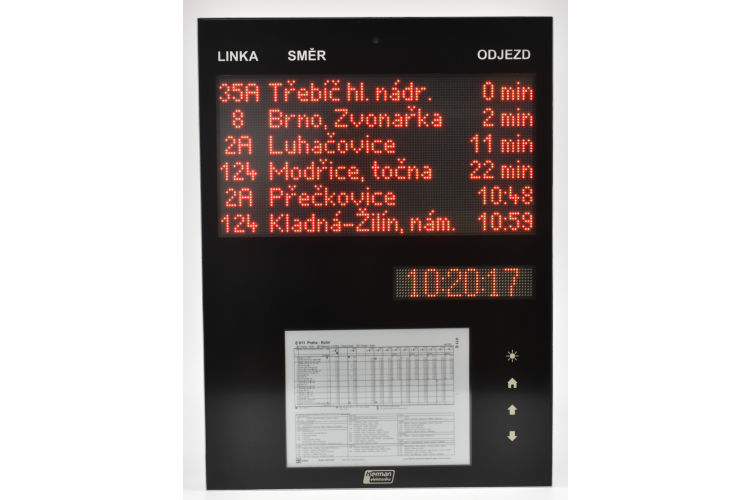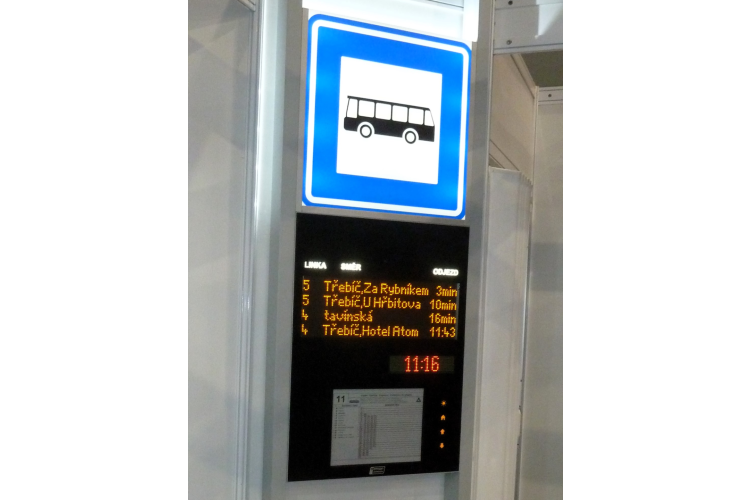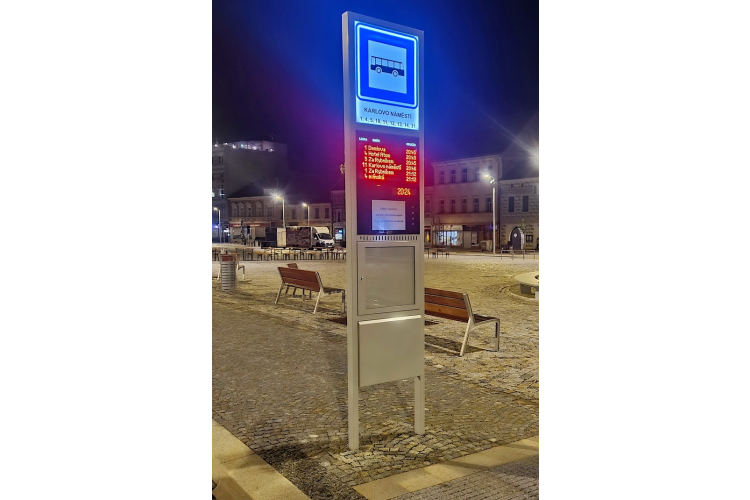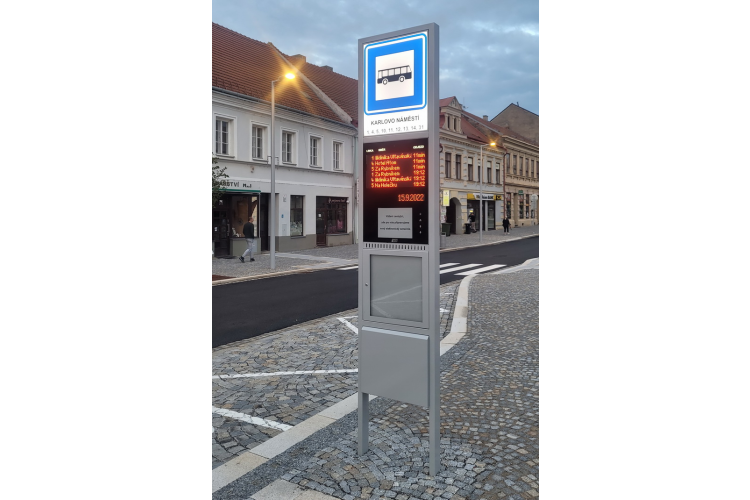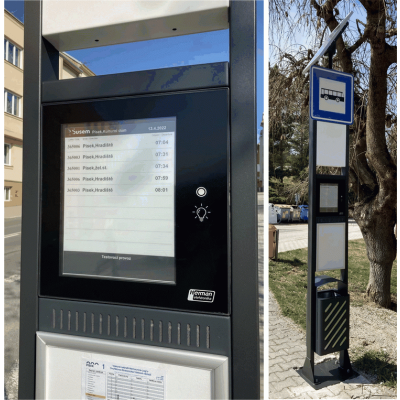
ELP 91x - marker with E-ink and LED panel
The combined panels integrate the features of an LED stop sign and a low-profile LCD display based on e-paper technology. The marker thus enables the display of current departures on an LED field and the display of standard timetables on electronic paper. These timetables can be changed from the dispatcher's workstation, eliminating the need to go around the stops to change paper timetables when they are changed.
Contact us
The combined panels integrate the features of an LED stop sign and a low-profile LCD display based on e-paper technology. The marker thus enables the display of current departures on an LED field and the display of standard timetables on electronic paper. These timetables can be changed from the dispatcher's workstation, eliminating the need to go around the stops to change paper timetables when they are changed.
Part of the LED panel:
- Replaces standard LED panel with 2-6 rows and 120 columns (ELP 912 to ELP 916) - 3.8 mm pitch
- it is a low power LED design - in text mode at full light it consumes 11W for the 6 line design, in night mode 3W
- contains a separate field for displaying date and time (or temperature)
- has automatic LED brightness control
- high contrast LED - uses black LEDs
Part of the e-paper display:
- 13.3″ LCD e-paper display, "landscape" orientation
- Ability to store 10 or more display pages including 3 control buttons for flipping between pages (default page, forward, backward)
- possibility to turn on the backlight at night - calls up the passenger by pressing a button
- Integrated e-paper heating for fast redrawing in winter months
- 1600 x 1200 resolution and up to 16 grayscale.
Communications section:
- LTE communication with dispatch (SW Transportella) in "mobile" mode - i.e. low power mode with minimal LTE modem consumption,
- communication and reporting for the blind - includes a command receiver with enhanced interference immunity EPNEV 1.x4
- GPS for time synchronization and panel location identification (optional)
- V2X unit for communication to identify vehicles stopping at a stop (optional)
- Public WiFi (optional).
Power part:
- Depending on design - permanent, from public lighting or from solar panels (limited use)
- Charger for LIFEPO4 battery (when powered by public lighting or solar panels)
- LIFEPO4 battery with capacity for several days of operation (depending on equipment)
- Option to temper the batteries when charging from public lighting in winter (charging will not be switched on until the battery is at a suitable temperature for charging to maximise battery life)
- New unit for comprehensive battery monitoring including charging - BMS 03 (Battery Management System)
Other parameters:
- Shock sensor with shock level adjustment for reporting to the control room
- Sensors for panel or panel box opening (up to 3 contact monitoring) with reporting to dispatch
- 10W speaker for audible announcements for the blind or from dispatch using data services only (does not need voice services)
- Antiglare glass to prevent reflections from surroundings
- Automatic switching of the "marker head" illumination during night hours.



